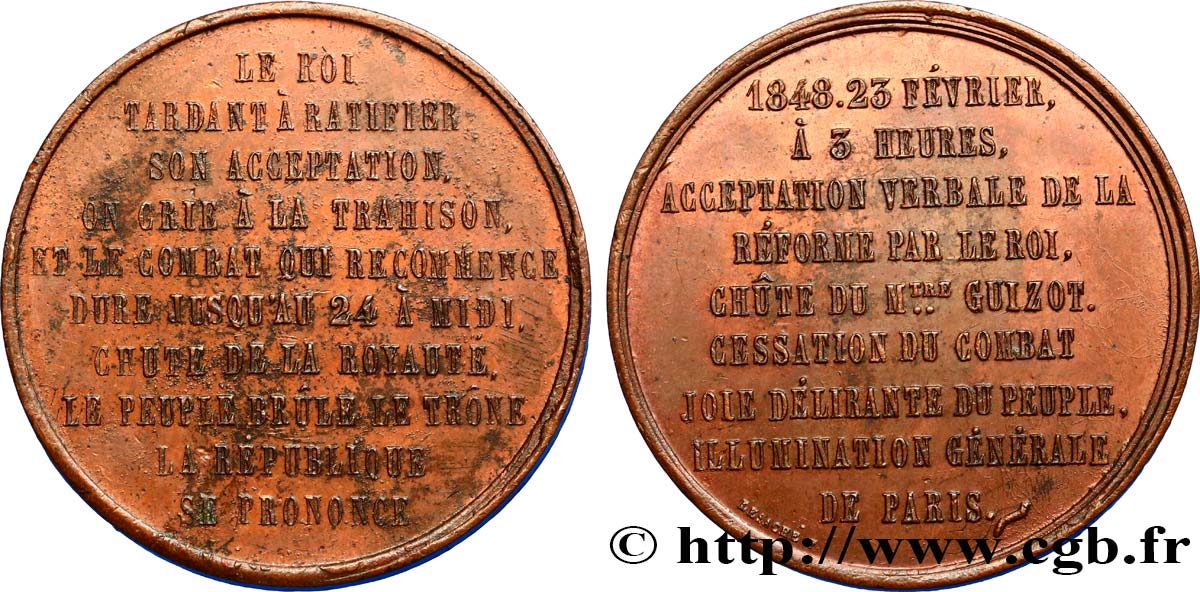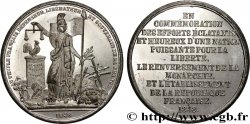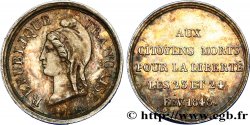E-auction 320-237590 - fme_412518 - II REPUBLIC Médaille, acceptation verbale de la réforme par le roi
You must signin and be an approved bidder to bid, LOGIN TO BID. Accounts are subject to approval and the approval process takes place within 48 hours. Do not wait until the day a sale closes to register. Clicking on « bid » constitutes acceptance of the terms of use of cgb.fr private e-auctions.
Bids must be placed in whole Euro amounts only. The sale will start closing at the time stated on the item description; any bids received at the site after the closing time will not be executed. Transmission times may vary and bids could be rejected if you wait until the last second. For further information ckeck the E-auctions F.A.Q.
NO BUYER'S FEE.
NO BUYER'S FEE.
| Estimate : | 120 € |
| Price : | 41 € |
| Maximum bid : | 251 € |
| End of the sale : | 03 June 2019 18:25:30 |
| bidders : | 8 bidders |
Type : Médaille, acceptation verbale de la réforme par le roi
Date: 1848
Mint name / Town : 75 - Paris
Metal : bronze
Diameter : 39 mm
Orientation dies : 12 h.
Engraver LESACHÉ J. J.
Weight : 26 g.
Coments on the condition:
Médaille intéressante avec une agréable patine rougeâtre et des légendes plus sombres. Teinte hétérogène avec des zones brunes
Obverse
Obverse legend : LE ROI / TARDANT À RATIFIER / SON ACCEPTATION. / ON CRIE À LA TRAHISON, / ET LE COMBAT QUI RECOMMENCE / DURE JUSQU’AU 24 À MIDI. / CHUTE DE LA ROYAUTÉ / LE PEUPLE BRÛLE LE TRÔNE / LA RÉPUBLIQUE / SE PRONONCE..
Obverse description : Légende en 10 lignes horizontales.
Reverse
Reverse legend : 1848. 23 FÉVRIER / À 3 HEURES, / ACCEPTATION VERBALE DE LA / RÉFORME PAR LE ROI, / CHÛTE DU MTRE GUIZOT. / CESSATION DU COMBAT / JOIE DÉLIRANTE DU PEUPLE. / ILLUMINATION GÉNÉRALE / DE PARIS..
Reverse description : Légende en 9 lignes horizontales.
Commentary
Le graveur LESACHÉ réalisa surtout des médailles pour les événement des 1848. Il s’agit probablement de J. J. Lesaché, père de Lesaché Emile-Eugène (1818-1789) qui était un dessinateur, graveur en taille-douce et aquarelliste, élève de son père. E. E. Lesaché a exécuté un très grand nombre de gravures : des adresses, factures, diplômes, ex-libris, menus, étiquettes, mandats, en-tètes de lettres et de valeurs industrielles et réalisa des affiches pour des théâtres, cirques, hippodromes, gymnase, concerts, etc...
J.J. Lesaché a obtenu une médaille de bronze en Typographie à l’exposition des produits de l’Industrie française de 1834.
La révolution française de 1848 est la troisième révolution française après la révolution française de 1789 et celle de 1830, elle se déroule à Paris du 22 au 25 février 1848.
Sous l'impulsion des libéraux et des républicains, le peuple de Paris, à la suite d'une fusillade, se soulève à nouveau et parvient à prendre le contrôle de la capitale. Louis-Philippe, refusant de faire tirer sur les Parisiens, est donc contraint d'abdiquer en faveur de son petit-fils, Philippe d'Orléans, le 24 février 1848.
Le même jour, dès 15 heures, la Seconde République est proclamée par Alphonse de Lamartine, entouré des révolutionnaires parisiens. Vers 20 heures, un gouvernement provisoire est mis en place, mettant ainsi fin à la Monarchie de Juillet..
J.J. Lesaché a obtenu une médaille de bronze en Typographie à l’exposition des produits de l’Industrie française de 1834.
La révolution française de 1848 est la troisième révolution française après la révolution française de 1789 et celle de 1830, elle se déroule à Paris du 22 au 25 février 1848.
Sous l'impulsion des libéraux et des républicains, le peuple de Paris, à la suite d'une fusillade, se soulève à nouveau et parvient à prendre le contrôle de la capitale. Louis-Philippe, refusant de faire tirer sur les Parisiens, est donc contraint d'abdiquer en faveur de son petit-fils, Philippe d'Orléans, le 24 février 1848.
Le même jour, dès 15 heures, la Seconde République est proclamée par Alphonse de Lamartine, entouré des révolutionnaires parisiens. Vers 20 heures, un gouvernement provisoire est mis en place, mettant ainsi fin à la Monarchie de Juillet..








 Report a mistake
Report a mistake Print the page
Print the page Share my selection
Share my selection Ask a question
Ask a question Consign / sell
Consign / sell
 Full data
Full data



